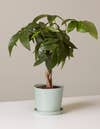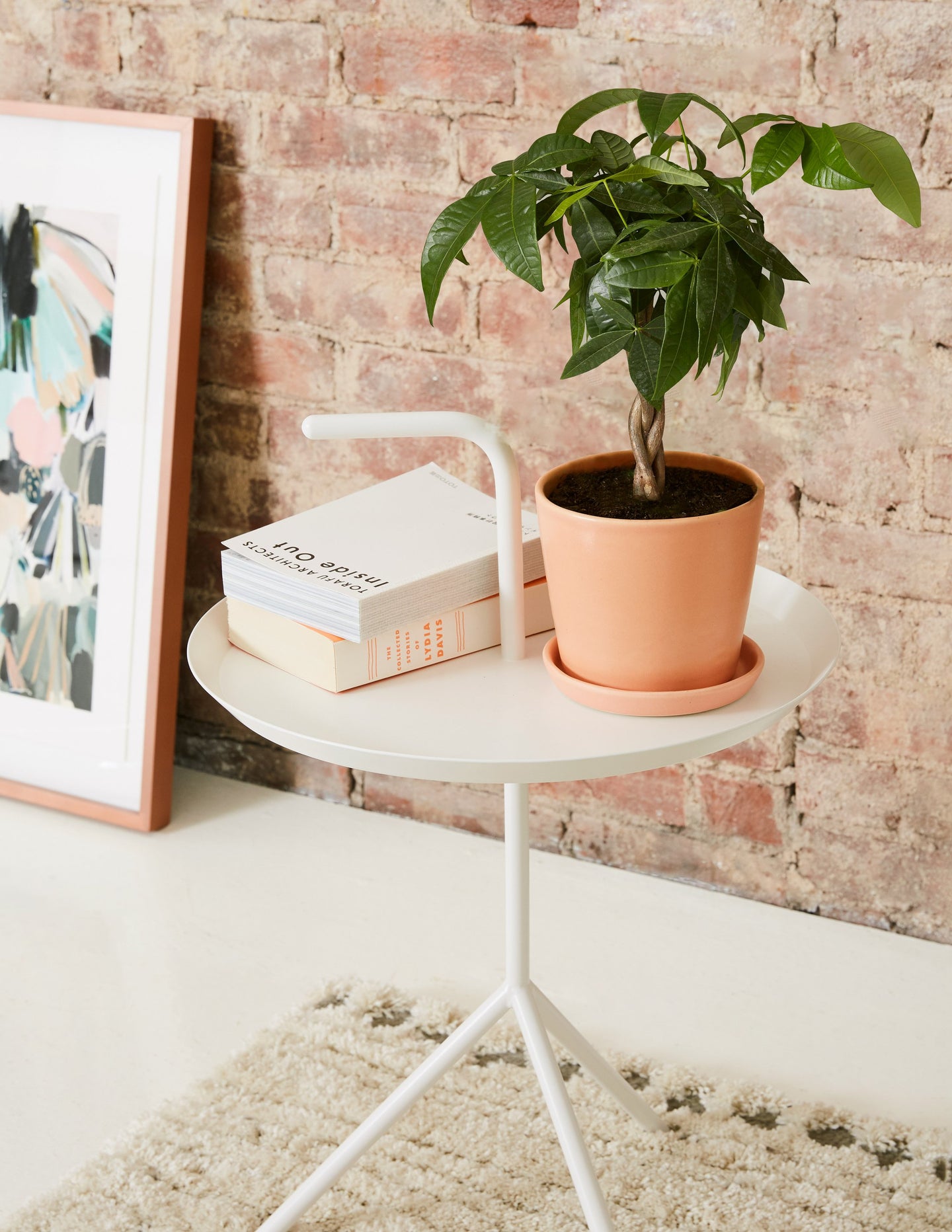Learn How to Care for a Money Tree and It Might Save You Cash
You can’t keep replacing the ones that die.
Updated Sep 10, 2018 4:44 PM
We may earn revenue from the products available on this page and participate in affiliate programs.
In our collective green thumb obsession, it’s almost expected that interiors feature some form of greenery. Maybe that’s as simple as a row of potted herbs on a windowsill or perhaps a succulent or two on a nightstand. But for those who want a slightly bigger challenge (and the completion of an on-trend aesthetic), it may seem more rewarding to go with a larger plant, like a money tree, for instance.
These evergreens, which have long, pointed leaves and a rich, verdant color, gained their nickname from the idea that their owners would have prosperity. Sounds like your kind of plant? Let us provide some good-natured advice: It’s not just about how a plant looks, it’s also about how a plant feels. Money trees look great in a living room, and they’re relatively forgiving toward busy or forgetful people. But they have needs, too.
“Money trees are usually one of two species of the genus Pachira: Pachira Aquatica or Pachira Glabra. They’re native to the Neotropics and belong to the family Malvaceae,” says Erin Marino, director of brand marketing at The Sill. “The money tree has earned its right into every plant shop because of its resilience, ease of growth, and ability to rebound if neglected.”
While choosing this flexible plant is smart in theory, that’s only if you can keep it alive. So we asked Marino for her advice on how to care for a money tree, from what soil to use and how much water it needs to where it thrives and which plants complement it. Keep her tips in mind as you debate bringing one home, and hopefully, you can design a room where a money tree looks and feels its best.

Use the Correct Soil
“Regular indoor plant potting mix works,” Marino says. “Opt for a planter with drainage holes and a saucer, or if your planter doesn’t have drainage, line the bottom of it with rocks to create space for excess water to pool away from the roots. We use lava rocks.”
Find Its Light
“Money trees thrive in bright and indirect light, but can tolerate medium and indirect light, too,” she continues. “Keep them out of direct, intense sun, which will burn their leaves.”
Put It on a Schedule
“If kept in its preferred light—bright and indirect—you’ll probably be looking at watering your plant about once every one to two weeks, depending on the season. It’s generally less in the fall and winter, and more in the spring and summer,” Marino notes. “Healthy plants will rarely say no to a drink of water, but it’s all in the timing. One of the biggest mistakes you can make is sticking to an exact watering schedule. Check in with your plant and you’ll learn the signs it gives when it’s thirsty, such as wrinkling leaves, wilting stems, and bone-dry potting mix.”
Pick the Right Pot
“Any pot meant for houseplants works, but I’m partial to The Sill’s ceramic planters,” Marino says. “They come in a variety of shapes, colors, and sizes.”
Give It Air to Breathe
“Money trees can definitely benefit from increased humidity levels in the home,” she adds. “If you can place a small humidifier by your tree, or group it with other plants that enjoy the same type of care, that could help. Definitely avoid placing them by heaters or anything that will dry out the surrounding air.”
Find Its Friends
“Monsteras, peperomias, and begonias pair well with money trees, because they also thrive in bright but indirect light,” Marino says.
See more plant care tips: I’m Determined to Grow a Citrus Tree in My Tiny Apartment—Can It Be Done? How to Make the Plant Wall of Your Dreams How to Keep Your Monstera Alive and Thriving, According to Expert Plant Parents
